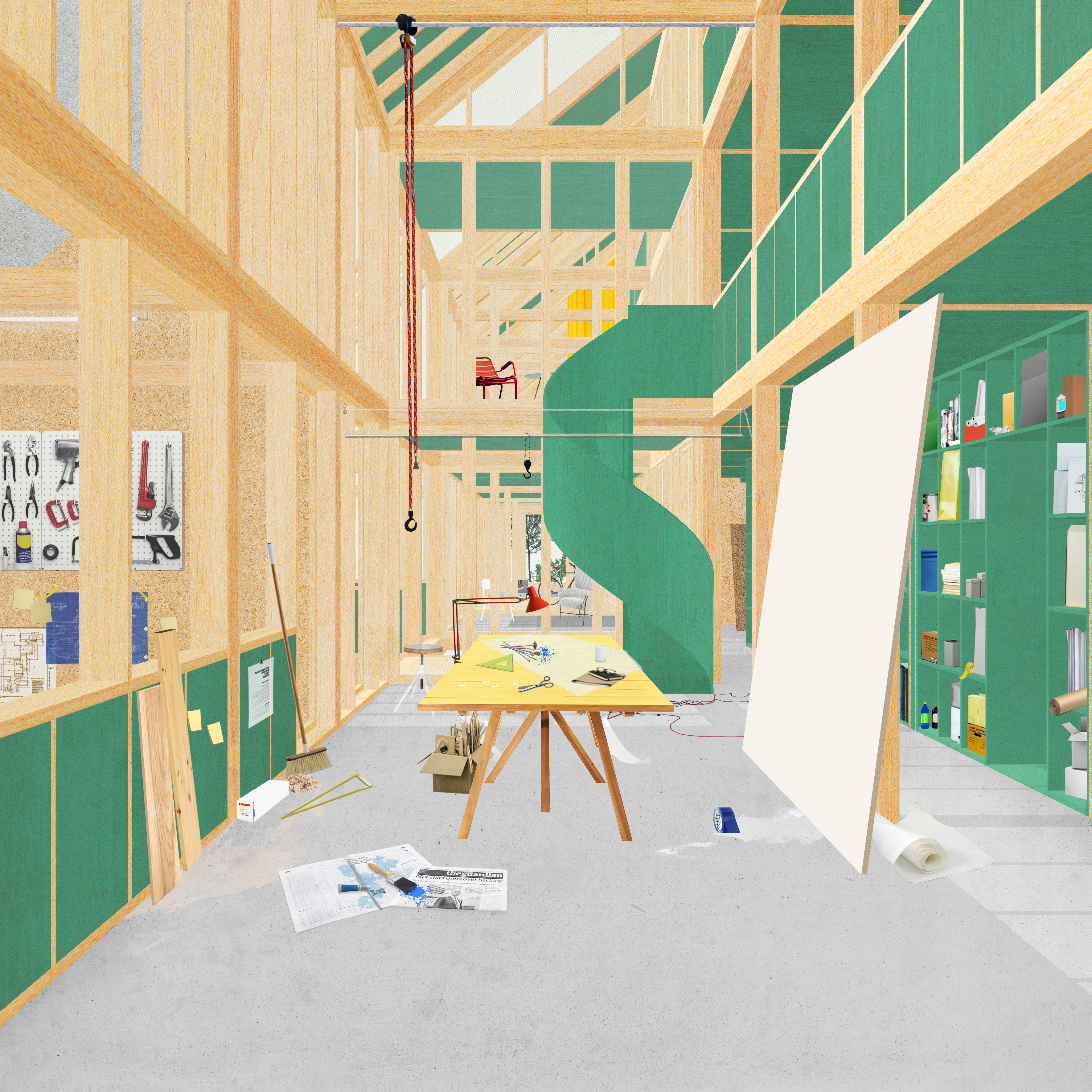Marx famously addressed the landlord’s legal theft of land as the “primitive accumulation of capital.” See Karl Marx, “Part Eight: So-Called Primitive Accumulation,” in Karl Marx, Capital: A Critique of Political Economy: Volume One, trans. Ben Fowkes (London: Penguin, 1992), 873–942.
See Gary Fields, Enclosure: Palestinian Landscapes in a Historical Mirror (Los Angeles: University of California Press, 2017), 33.
Ibid., 115–16.
See Josh Ryan-Collins, Toby Lloyd, and Laurie Macfarlane, Rethinking the Economics of Land and Housing (London: ZED, 2016), 30.
See Ibid., 30.
Ibid., 25.
Ibid., 25.
Saskia Sassen, “Expanding the Terrain for Global Capital: When Local Housing Becomes an Electronic Instrument,” in Manuel B. Aalbers, ed., Subprime Cities: The Political Economy of Mortgage Markets (Hoboken: Blackwell, 2012), 78.
See Ivan Ascher, Portfolio Society: On the Capitalist Mode of Prediction (New York: Zone Books, 2016).
Ibid., 74.
UN General Assembly, Resolution 34/51, Report of the Special Rapporteur on adequate housing as a component of the right to an adequate standard of living, and on the right to non-discrimination in this context, A/HRC/34/51 (January, 18 2017), https://undocs.org/A/HRC/34/51.
See James DeFilippis, Unmaking Goliath: Community Control in the Face of Global Capital (Routledge: New York, 2004).
Dogma and Realism Working Group, Communal Villa: Production and Reproduction in Artist's Housing (Leipzig: Spector Books, 2015), 82–83.
Ibid.
See Robert S. Swann, Shimon Gottschalk, Erick S. Hansch, and Edward Webster, The Community Land Trust: A Guide to a New Model for Land Tenure in America (Cambridge: Center for Community Economic Development, 1972).
See James DeFilippis, Unmaking Goliath.
Sylvia Claus, “The impressive development of Housing Cooperatives in Zurich,” ed. Dominique Boudet, New Housing in Zurich: Typologies for a Changing Society (Zurich: Park Books, 2017), 17–27.
See Pier Vittorio Aureli, “Do You Remember Counterrevolution?: The Politics of Filippo Brunelleschi's Syntactic Architecture,” AA Files 71 (2015): 147–65.
See Nick Srnicek, Platform Capitalism (Cambridge: Polity Press, 2017).
Trebor Scholz, “Platform Cooperativism vs. the Sharing Economy,” Medium, December 5, 2014, https://medium.com/@trebors/platform-cooperativism-vs-the-sharing-economy-2ea737f1b5ad#.575nndfdq.
“How Long Do Buildings Last?” RDH Building Science, January 28, 2015, https://www.rdh.com/blog/long-buildings-last/.
Michel Feher, Rated Agency: Investee Politics in a Speculative Age (New York: Zone Books, 2018), 191.
See Niklas Maak, Living Complex: From Zombie City to the New Communal (Munich: Hirmer, 2015).
On the separation between public and private space and its consequences on domestic space, see Michael McKeon, The Secret History of Domesticity: Public and Private Division of Knowledge (Baltimore: John Hopkins University Press, 2005).
See Maria Mies, Patriarchy and Accumulation on a World Scale: Women in the International Division of Labor (London: Zed Books, 2014), 74–75.
See Daniel Maudin, “Habitations of the Laborer: Improvement, Reform and the Neoclassical Cottage in Eighteenth-Century Britain,” Journal of Design History 23, Model, Method, and Mediation in the History of Housing Design (2010): 7–20.
Elizabeth Collins Cromley, Alone Together: A History of New York’s Early Apartments (Ithaca: Cornell University Press, 1990), 5–6.
Paul Groth, Living Downtown: The History of Residential Hotels in the United States (Los Angeles: University of California Press, 1994), 38. See Anna Puigjaner, “Bringing the Kitchen Out of the House,” e-flux Architecture, Overgrowth, https://www.e-flux.com/architecture/overgrowth/221624/bringing-the-kitchen-out-of-the-house/.
Ibid., 60.
See Dolores Hayden, Seven American Utopias: The Architecture of Communitarian Socialism (Cambridge: MIT Press, 1976).
See Dolores Hayden, Grand Domestic Revolution (Cambridge: MIT Press, 1976).
Ibid., 65.
See Anatole Kopp, Town and Revolution: Soviet Architecture and City Planning 1917–1935 (New York: George Braziller, 1970).
An early example of cooperative housing in Europe was Ebenezer Howard’s cooperative “quadrangles,” which he proposed as part of his reformist project for new “Garden Cities” to be built around London. Implemented at Homesgarth in Letchworth, the quadrangle was designed by Harold Clapham Lander as a communal house that combined the full privacy of the individual home with the benefits of centralized housekeeping. See Norbert Schoenauer, “Early European Collective Habitation: From Utopia to Reality,” in New Households, New Housing, ed. Karen A. Franck and Sherry Ahrentzen (New York: Van Nostrand Reinold, 1991), 50–53.
The Soviet Dom Kommuna can be considered the most extreme form of communal living and socialized domestic labour. See Ibid., 55–67.
See Charles Hoc and Robert A. Slayton, New Homeless and Old: Community and the Skid Row Hotel (Philadelphia: Temple University Press, 1984), 62–86.
See Kathrin M. McCamant and Charles R. Durret, “Cohousing in Denmark,” in Franck and Ahrentzen, New Households, New Housing, 95–126.
Alison Woodward, “Communal Housing in Sweden: A Remedy for the Stress of Everyday Life?”, in ibid., 72.
See Karin Andersson, Caroline Glabik, Ellen Persson, and Megan Prier, Hej Stacken: Project Portfolio: Design and Planning for Social Inclusion 2012/2013, January 11, 2013, https://suburbsdesign.files.wordpress.com/2013/04/stacken-portfolio1.pdf.
See Melinda Cooper, Family Values: Between Neoliberalism and the New Social Conservatism (New York: Zone Books, 2017).
More recently non-family housing typologies such as co-living are coming back, not in the form of cooperative housing, but as new speculative initiatives. In recent years, in cities like London, New York and San Francisco where land and housing prices are very high, home property based on a mortgage is no longer affordable for middle-class and rental units have returned as the most profitable means of housing speculation. This condition is affecting younger generations in particular, whose budget and increasingly precarious existence do not allow them to afford mortgages or home property. This new wave of housing for rent has dramatically reduced housing size to the bare minimum. Typologies like micro-housing or micro-flats which consist of one room units inclusive of bathroom and micro-kitchen are on the rise, and often marketed as some form of hotel living—yet, unlike their late 19thcentury predecessors, they are extremely expensive.
“Frequently Asked Questions,” SATO StudioHome, n.d., https://www.sato.fi/en/faq-rental-apartments/studiokoti.
See Sophie Kleeman, “Absurd ‘Co-Living Space’ WeLive is Jacking Up its Prices,” Gizmodo, December 5, 2016, https://gizmodo.com/absurd-co-living-space-welive-is-jacking-up-its-prices-1789702081.
See Wouter Bervoest and Hilde Heynen, “The Obduracy of the Detached Single Family House in Flanders,” International Journal of Housing Policy 13, no. 4 (October 2013): 358–80.
